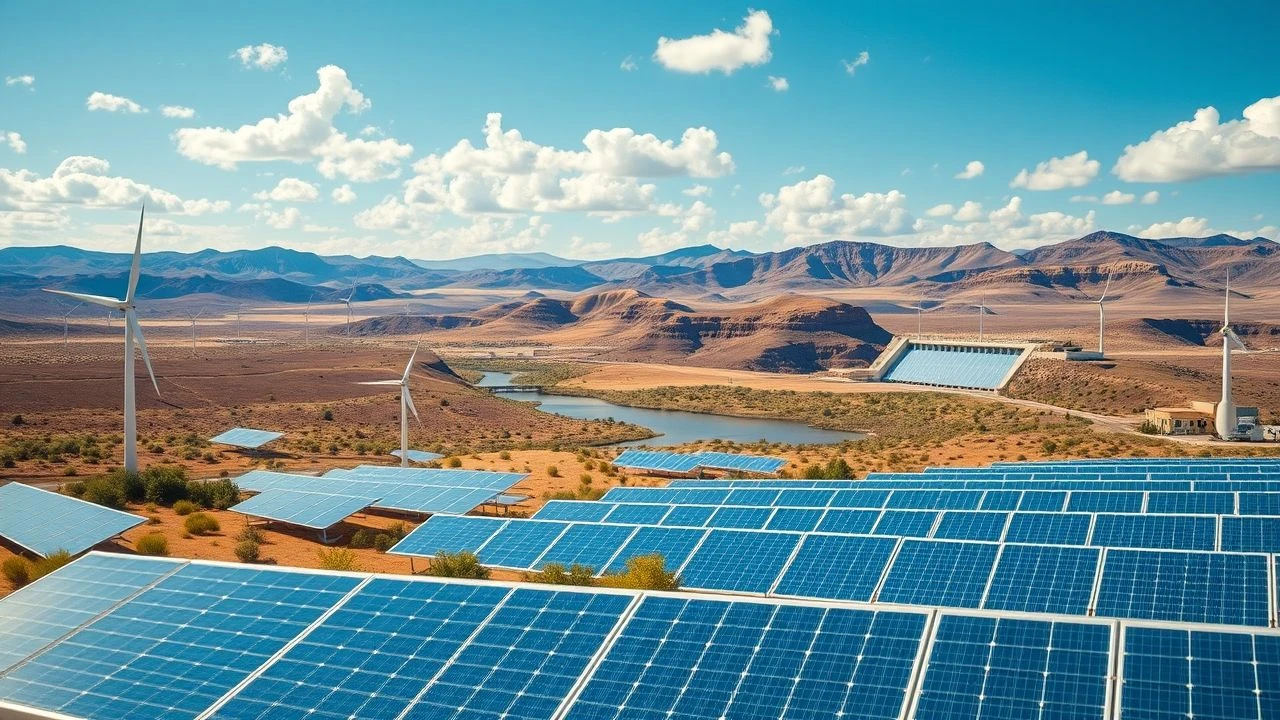
Key government initiatives are acting as major catalysts. Consider the Investment Tax Credit (ITC) and Production Tax Credit (PTC); these incentives have proven incredibly effective in de-risking projects and driving down the cost of renewables. At the state level, policies such as California's ambitious goal of achieving 100% clean electricity are sending strong signals to the market. "These targets provide a clear framework for investment," notes leading energy economist, Dr Emily Carter, "businesses need that certainty."
And what about the economic benefits? This influx of capital is creating jobs, especially in regions transitioning away from fossil fuels. Think about it – solar panel installers, wind turbine technicians, and engineers all playing their part. As one policy analyst put it: Renewable energy is not just about saving the planet; it's about creating a thriving, sustainable economy.
It's all pointing towards a very bright future for renewables stateside!
Wind energy is also seeing some serious upgrades. Taller turbines and more advanced blade designs are capturing more wind and generating more power. Innovations in materials science are leading to lighter, stronger blades that can withstand higher wind speeds. Then, there's the ever-critical energy storage sector. Advanced battery technologies like lithium-ion and flow batteries are improving in terms of energy density, lifespan, and safety. We're also seeing a resurgence of interest in pumped hydro storage, which involves pumping water uphill to a reservoir and then releasing it to generate electricity when needed.
Companies like First Solar and SunPower are at the forefront, constantly pushing the boundaries of what's possible with solar technology. Their efforts to improve panel efficiency and reduce manufacturing costs are contributing significantly to the accessibility of solar energy for homes and businesses alike. As Dr. Emily Carter, a leading materials scientist, notes, "The key to unlocking the full potential of renewable energy lies in continued investment in research and development. New materials, innovative designs, and smarter energy management systems will be crucial for making renewables the dominant energy source of the future."
These improvements across the board are making renewable energy a more and more attractive option, driving further investment and fuelling the ongoing green revolution.
"Energy storage is key to unlocking the full potential of renewable energy,"they noted, underscoring the urgency of this area.
Fortunately, the private sector is stepping up. We're seeing a surge in renewable energy investments, with venture capital flowing into clean technology start-ups at an unprecedented rate. Corporate commitments to 100% renewable energy are also becoming increasingly common, driving demand and creating a market for innovative solutions. While investment is a welcome sight, more needs to be done to overcome these challenges. For example, how can we encourage greater investment into long duration energy storage and ensure these investments are evenly spread out across the country?
Navigating this transition smoothly will require a concerted effort, involving government policies, private sector innovation, and public engagement. Only then can the US truly harness the full potential of the Green Revolution.

AI in Healthcare: Revolutionizing Patient Care and Navigating Ethical Dilemmas
Rising Mental Health Awareness Demands Stronger Support Systems and Accessible Resources
Revamping America's Roads: Ambitious Plans to Modernize U.S. Transportation Infrastructure Take Center Stage
Navigating the AI Revolution: Why Regulation is Now Essential
AI Ethics: Tech Leaders and Ethicists Clash Over Algorithmic Bias and the Future of Responsible AI Development
Cities Prioritize Public Transportation Improvements for Sustainable and Accessible Urban Living